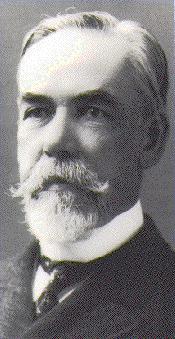Martin Theodore Kearney (Martin Theodore Kearney)

Was one of Fresno’s most significant pioneer land developers. Known as the “Raisin King of California,” he was one of the most prosperous and powerful agricultural leaders in the state. Among his achievements are the establishment of the colony farm system in Fresno County; the development of his 5,400-acre Fruit Vale Estate that focused on raisin production; and the formation of the California Raisin Growers’ Association. Coming to America in the mid-1800s, this son of an Irish laborer created his own persona. He made himself the refined, aristocratic gentleman revealed by his last portrait, a photograph taken in 1903. He was born in or near Liverpool, England, in 1842, the first child of James Carney, a 43 year old Irish laborer, and Ann Carney, who was 28 at the time. The census records show that Carney was the original spelling of the family name. In 1854, at the age of 12, they sailed to America and settled in Malden, Massachusetts, a small Irish community about ten miles north of Boston. Malden was home for several thousand immigrants who had fled poverty and starvation during the potato famine in Ireland. Kearney left Maiden at 18 to seek employment in Boston around the year 1860. Initially he worked as a clerk in a box or trunk manufacturing company. Before he left Boston 8 years later, he had moved from a position as a trunk salesman to the manager of the prosperous business. During the first five years of his life in Boston, and concurrent with his rise in the business world, he embarked on an intense period of self-education. He took lessons in German, French, elocution, and dancing, and sought to acquire the tastes and manners of genteel society. In 1868, the 26 year old entrepreneur decided to give up his comfortable position in Boston for a new life in California. Kearney reached California in February 1869, arriving in San Francisco from Boston by steamer. He presented himself as a distinguished gentleman of fine breeding, good education, and elegant manners. Speaking with a clipped Bostonian accent, not a trace of Irish brogue betrayed his background; Kearney presented a quiet, reserved style that quickly gained him access to the city’s high social circles. By the end of his first year in San Francisco, his diary records that he was buying property and mingling with the city’s social leaders. In March of 1869, he arrived in Fresno. He wanted to survey his recent land purchase. In March 1883, Kearney purchased 6,800 acres of rich land west and southwest of Fresno that appeared perfectly suited for irrigation. After unsuccessful efforts to find financing in New York, Kearney sailed to Europe to seek investors for Fruit Vale Estate. In the early spring of 1891, development of a 240-acre park began. Kearney lived in the superintendent’s Lodge as his temporary residence until his Chateau Fresno could be built. He lived in the lodge when he was in Fresno during the growing/harvest seasons, until his death in May 1906. The Superintendent’s Lodge, headquarters of the Fruit Vale Estate, was constructed from native adobe bricks made on the ranch and was carefully designed to complement the grand castle planned as Kearney’s permanent residence. Just when he seemed secure in his wealth and position, and was ready to start construction on his great chateau, world and national economic forces intervened. After several years of financial warnings, the depression, known as the Panic of 1893, swept across the nation. In 1894, Kearney returned to Europe to seek new capital for the Fruit Vale Estate and find stronger markets for its produce. Late in 1905, Kearney began preparations for his annual trip to Europe. At the time, only a handful of close associates knew that he was very ill. He suffered from gout, rheumatism, and heart disease. A major factor behind his failing health was the frustration Kearney endured because of his inability to convince his fellow raisin growers that a united, well-led corporation would work to the benefit of all of them. He died at age 64 in his stateroom aboard the British luxury liner Caronia. Kearney’s will left his estate of $1.5 million and 5400 acres of farmland to the Regents of the University of California. Kearney’s home in his park became a historic site museum in 1962 when the Fresno County Historical Society leased the mansion. (bio by: dcvolts)
Born
- February, 05, 1842
- England
Died
- January, 01, 1970
- Sea
Cemetery
- Chapel of the Light Columbarium
- California
- USA

